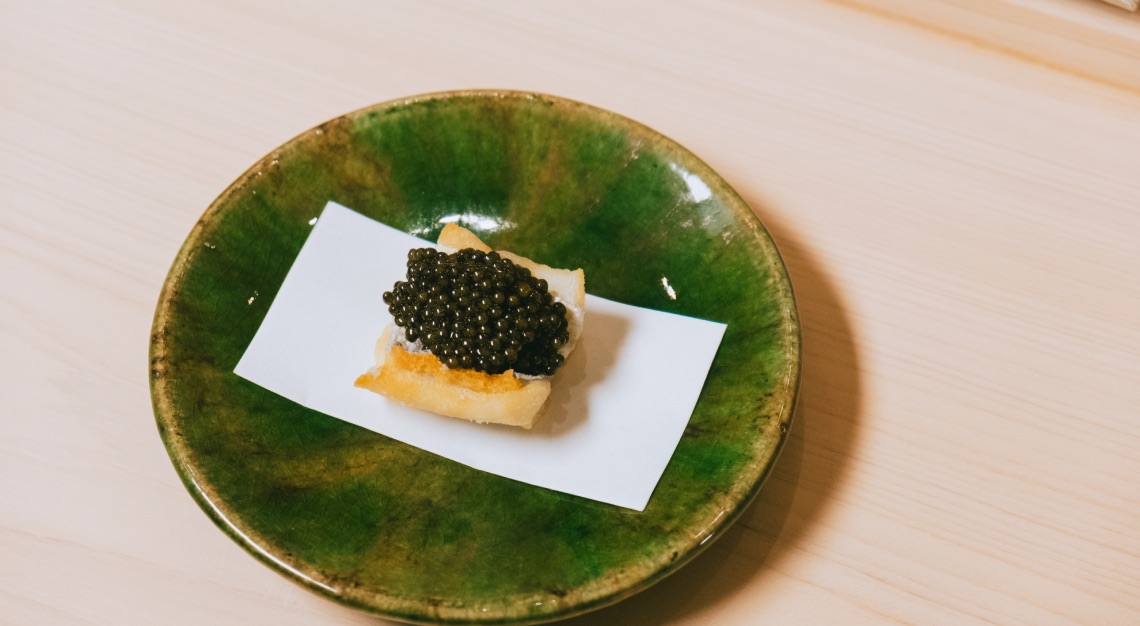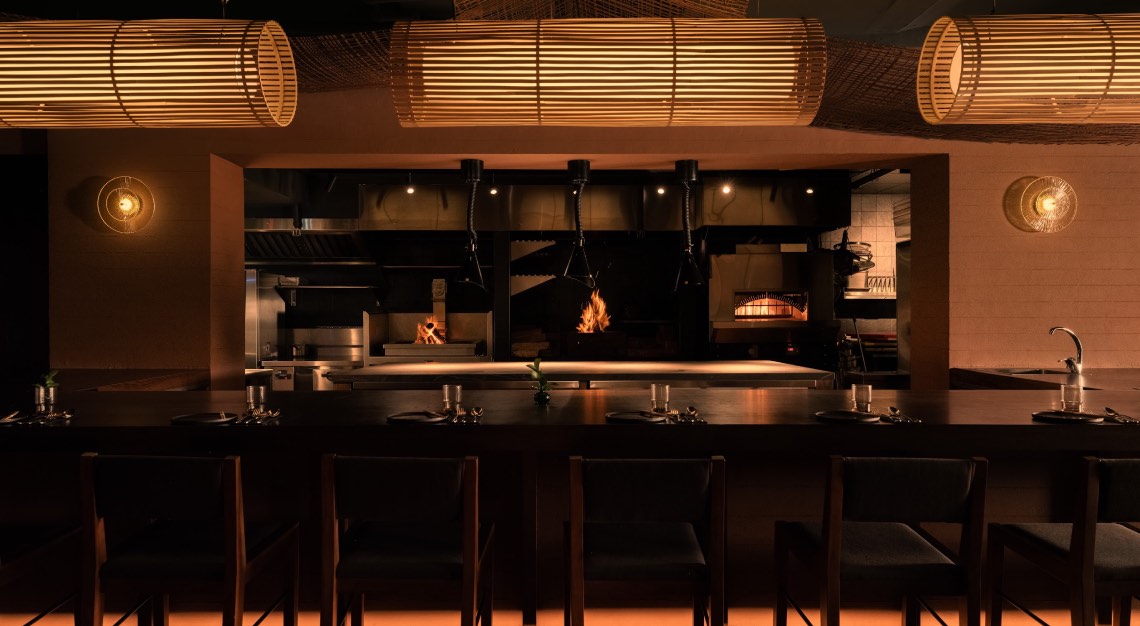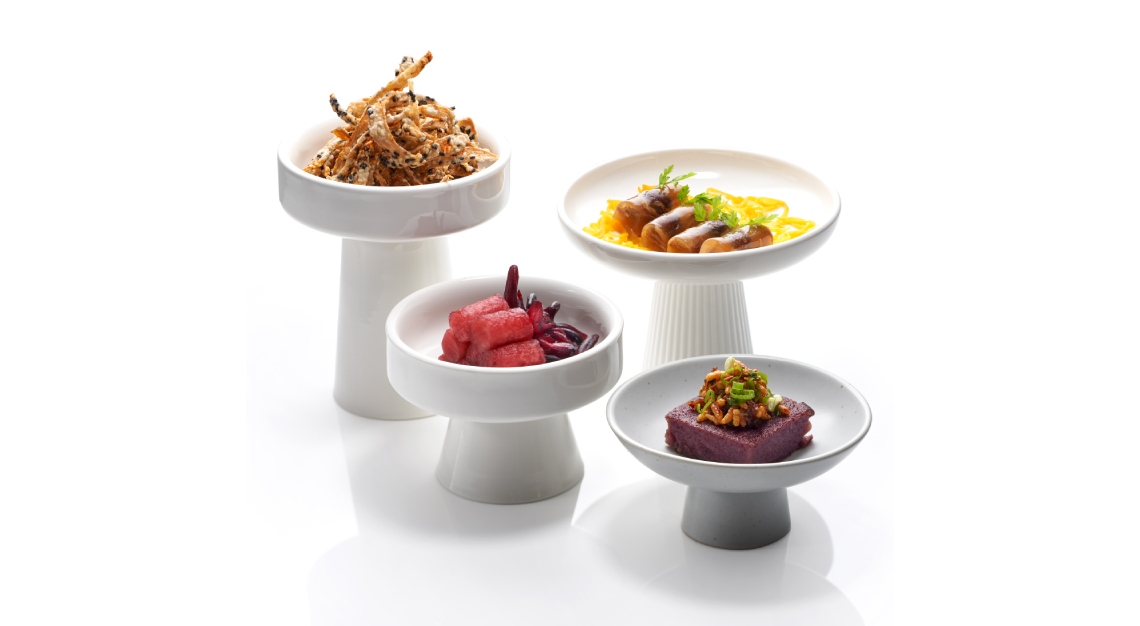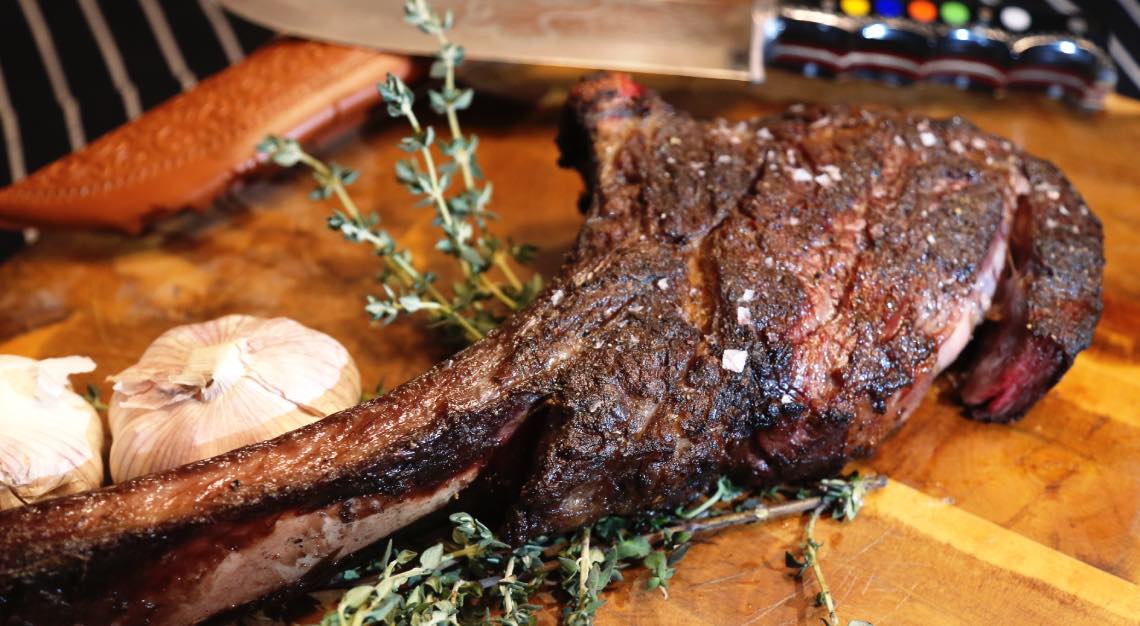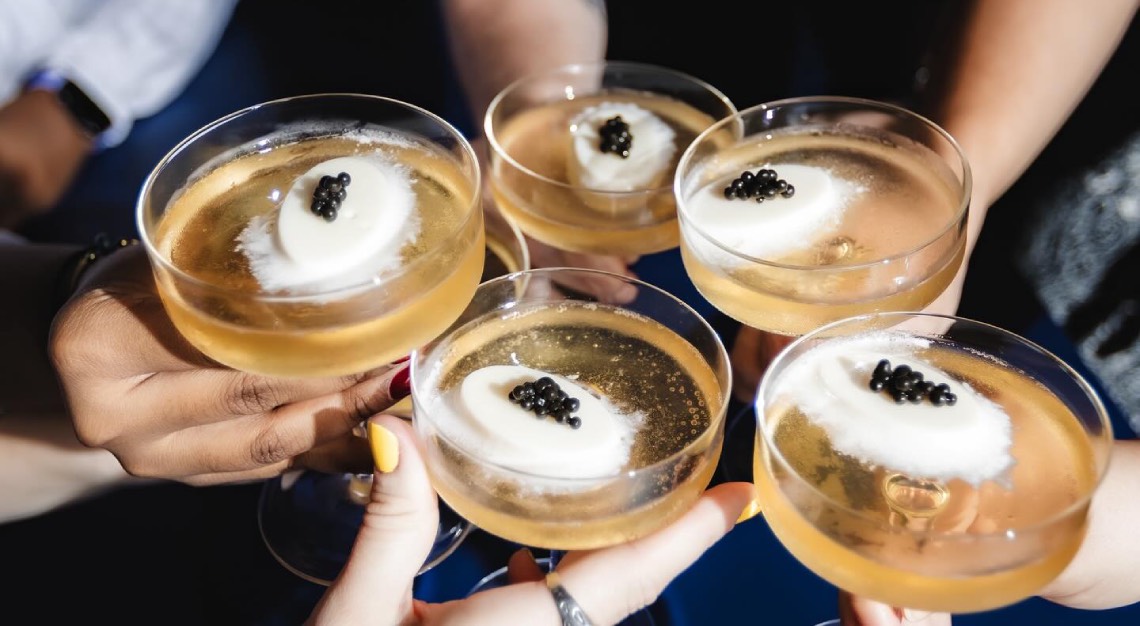At Sushi Sakuta, the chef customises techniques accordingly, bringing out the best in each and every ingredient
Who’s the chef?
That would be Yoshio Sakuta, the only Japanese we know who grew up hating raw fish. He hated its ‘fishy’ qualities, but that became history when he found a way to bring its natural, pristine flavours out. He’s a guy with a sensitive palate and a deep respect for food, and for that, very devoted to simplicity. Instead of overpowering his food with big flavours, he serves to elevate each ingredient in its purest form, customising techniques to suit each individual fish.
What’s the atmosphere like?
Simple, stunning and perhaps so quiet you end up eavesdropping, which if you were dining with five friends, opt for the private dining room instead. In the main dining area, a wall had to be knocked down to fit a five-metre-long counter carved from a single piece of hinoki wood. Sakuta tries to hide everything from sight, including the sink, so your eyes are kept focused on the culinary theatrics and the Rolodex of Japanese art that surround you. Do also pay attention to the selection of bowls and plates used. Made from red clay, they were crafted by Sakuta’s Japanese friend who hails from a line of great ceramic artisans in Sapporo. Their perfectly imperfect qualities fall in line with his ethos of eschewing the superficial, and to focus on what lies beneath.
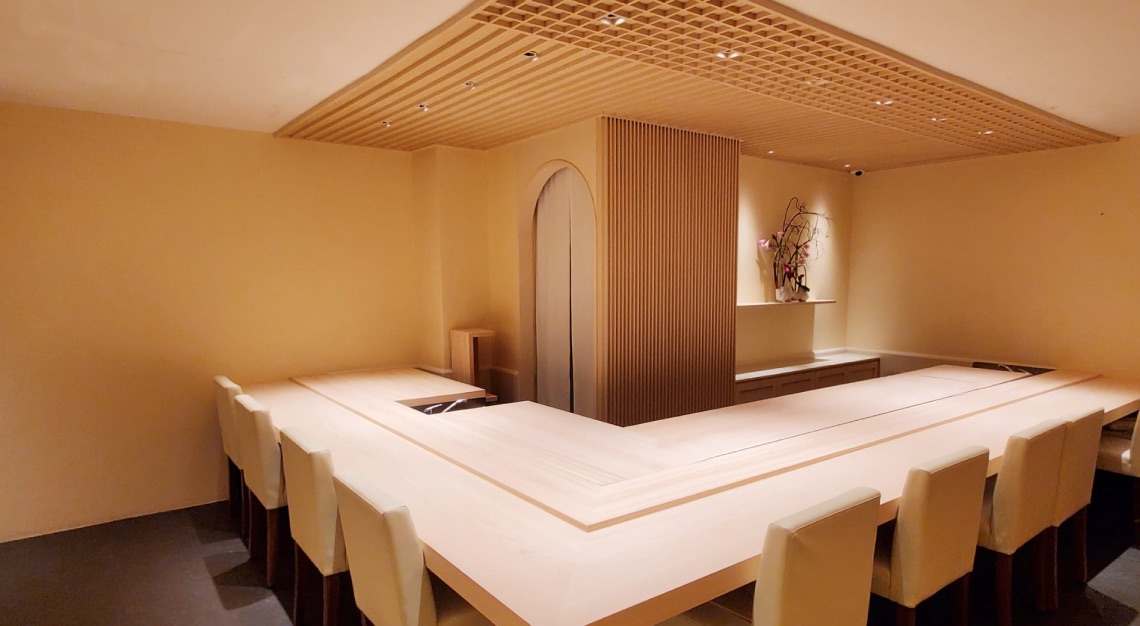
Now tell me about the food.
For a chef who hated raw fish, his sushi is incredible and true to the restaurant’s one Michelin star. Like we said, he customises techniques to each ingredient, unlocking its full potential and ensuring that only the most refined cuts grace your plates. For instance, different brining solutions are used on different kinds of fish. The gizzard shad, known for its inherent odour, is soaked in a recreated natural habitat (chilled and heavily salted) to remove the blood, moisture and smell. It is then gently washed and left to rest overnight in the fridge before it’s lightly brushed with a vinegar marinade. The Japanese halfbeak, on the other hand, is stripped of its bitterness by salting and a brining bath of lime juice, salt and kombu. This way, the natural umami essence is enhanced and the texture, enriched.
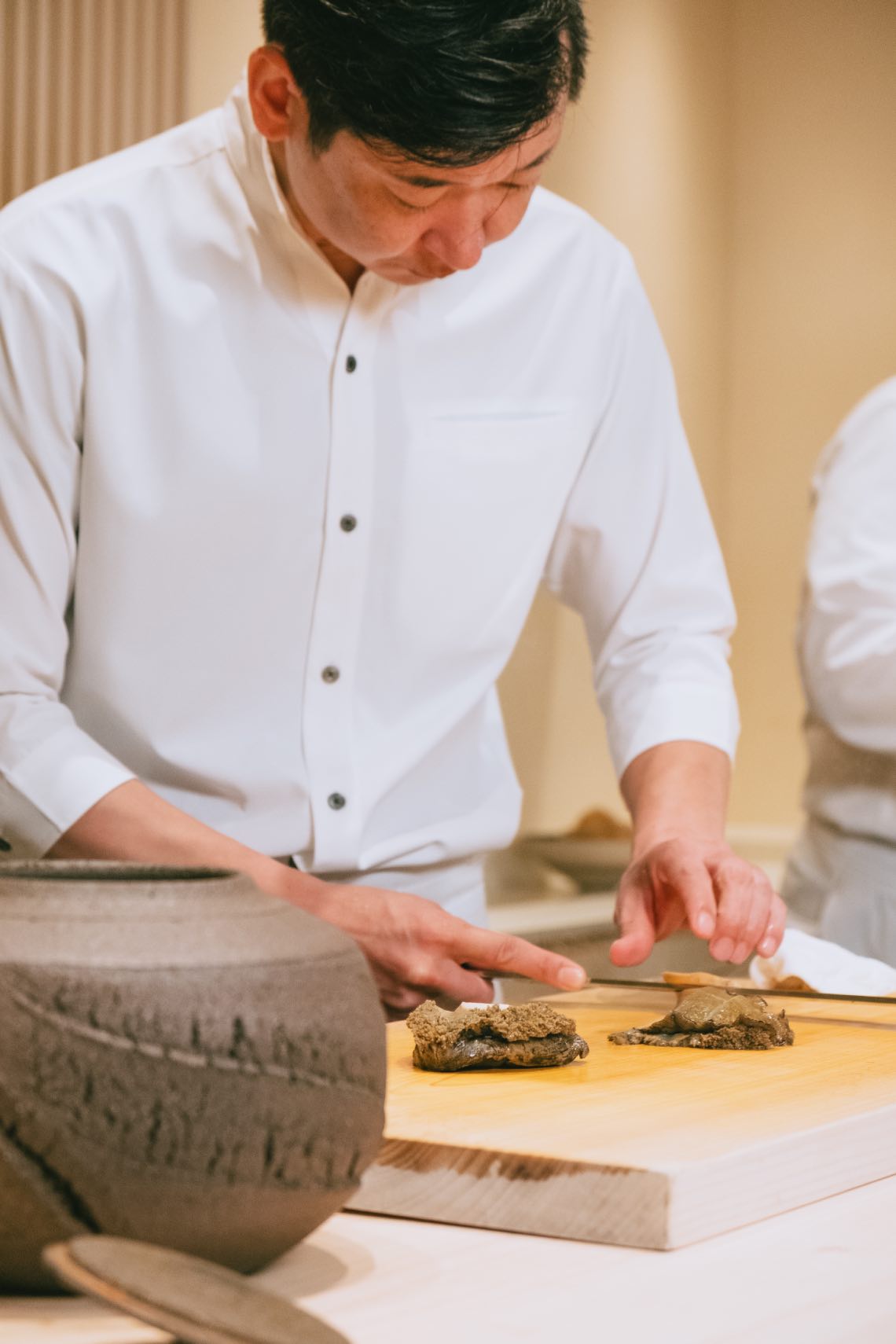
The rice is just as important. To achieve the best texture for sushi, Sakuta brings two kinds of rice varieties to the table – Hitomebore, for its delicate texture and subtle sweetness, and Sasanishiki, for its fluffy and glossy qualities – soaks them for two hours before a rapid steam bath in a claypot. For depth and complexity, he goes against tradition and seasons the rice with a blend of four vinegars (two red and two white).
There are two kinds of courses at lunch (S$350 and S$500) and one at dinner (S$500). This season, you can expect dishes like Scallop Soup, his take on chawanmushi; Deep-Fried Belt Fish that’s served with caviar (see featured photo above); Steamed Abalone with Abalone Liver Sauce; and sushi topped with bonito, fatty tuna, sea urchin, hairy crab and more. And if you want to pair your meal with a bottle of sake, leave it up to Makoto, the restaurant’s trusty sommelier.
Make your reservations here.
Sushi Sakuta
15 Stamford Road,
The Capitol Kempinski Hotel, 01-88,
Singapore 178906
Tel: +65 9863 9302
